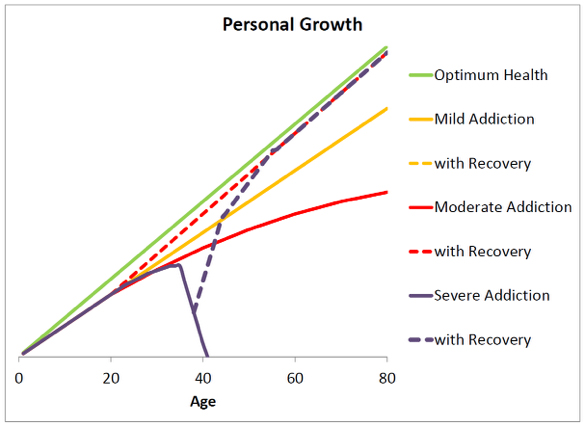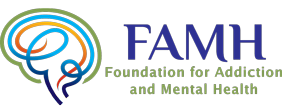What is Addiction?
Definition of Addiction
Addiction is a primary, chronic disease of brain reward, motivation, memory and related circuitry. Dysfunction in these circuits leads to characteristic biological, psychological, social and spiritual manifestations. This is reflected in an individual pathologically pursuing reward and/or relief by substance use and other behaviors.
Addiction is characterized by inability to consistently abstain, impairment in behavioral control, craving, diminished recognition of significant problems with one’s behaviors and interpersonal relationships, and a dysfunctional emotional response. Like other chronic diseases, addiction often involves cycles of relapse and remission. Without treatment or engagement in recovery activities, addiction is progressive and can result in disability or premature death.
AMERICAN SOCIETY OF ADDICTION MEDICINE (ASAM)
DEFINITION OF ADDICTION – ADOPTED APRIL 19, 2011
Addiction is Addiction
- Addictive thinking
- Dysfunctional brain circuitry
- Reward, motivation and memory
- Dysfunctional emotional response
- Diminished recognition of problems
- Craving to escape reality
- Impairment of behavioral control
- Inability to consistently abstain
- Obsession and fantasy
Addiction is characterized by
- A. Inability to consistently Abstain
- B. Impairment in Behavioural control
- C. Craving; increased “hunger” for rewarding experiences
- D. Diminished recognition of significant problems with one’s behaviours and interpersonal relationships
- E. A dysfunctional Emotional response
As with most diseases, the degree of severity can vary from mild to severe. Take diabetes for example; a mild case of diabetes can be treated with a simple change in diet, less sugar and less sugary foods. A severe case will require insulin injections. The chart below is a visual representation of the severity of addiction in a person’s life, and the deviation from a person reaching his or her full potential.
The green line shows a theoretical linear progress to growth that a person without any form of addiction is likely to experience over the course of a normal 80 year life.
The purple line shows the most likely path of a person with a severe case of Addiction. Usually between the ages of 15 and 30 it becomes quit clear that they need to embrace a life of recovery or their life will end in premature death.
The red line shows the most likely path of a person with a moderate case of Addiction. Their ability to achieve their own personal human potential is limited by a moderate case of Addiction that will eventually manifest in a physical health condition, such as cancer, lung disease, kidney disease, diabetes, etc.
The yellow line shows the most likely path of a person with a mild case of Addiction. Generally, for most intents and purposes their lives go relatively well, without them ever knowing they didn’t reach their full individual human potential – the typical human experience. It is important to note that untreated mild Addiction can progress into moderate Addiction, rather quickly if there are more aggravating factors, and that untreated moderate Addiction can progress into severe Addiction, with aging and/or increasing or sudden life stressors.

| Physical Health Condition | Likely Addiction related Cause |
|---|---|
| Chronic Pain | Food, tobacco, opioids |
| Neurological Disorders | Cocaine, ecstasy, crystal meth |
| Liver Disease | Alcohol, pharmaceuticals |
| Lung Disease | Tobacco, marijuana, cocaine |
| Kidney Disease | Alcohol, pharmaceuticals |
| Diabetes | Food, alcohol |
| Cardiovascular Disease | Tobacco, alcohol, food |
| Cancer | Tobacco, alcohol, food |
| Inflammatory Bowel Disease | Alcohol, cocaine |
